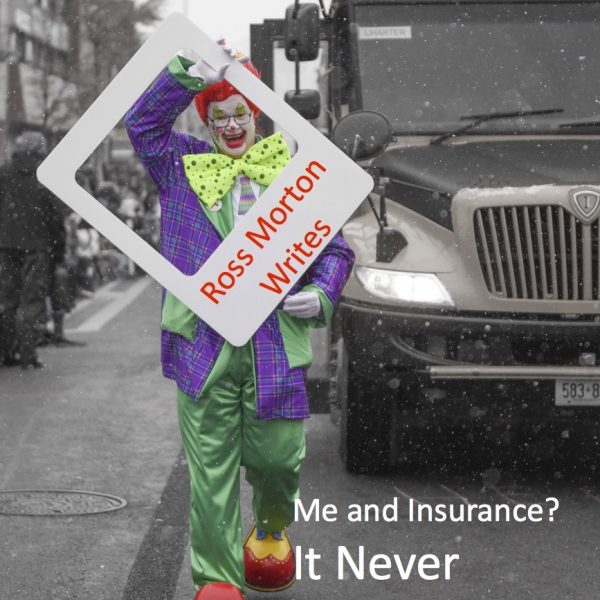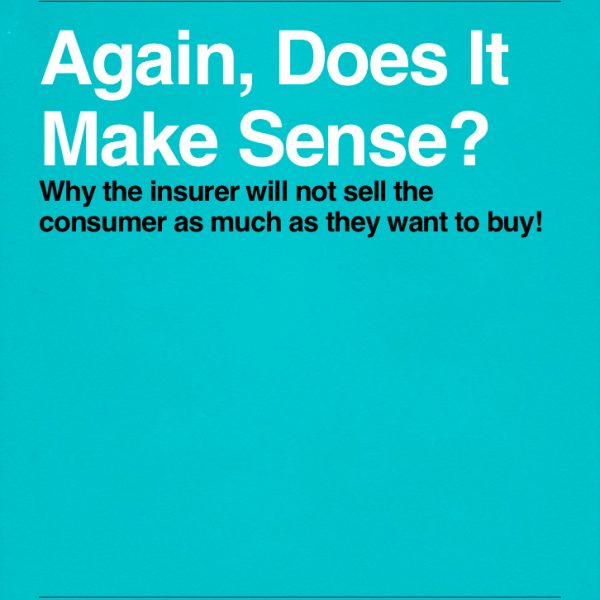Being tone deaf and absolutely perplexed at the mere sight of a sheet of music I have often found myself on the wrong hymn but never in the wrong hymnbook. As I sang my heart out, those around me stared in disbelieve that anyone could be so terrible at something as simple as singing along with the old favorite hymns. “Was he being an obstinate child?” or “If he wants to desecrate the sanctity of the church he is certainly accomplishing that mission.” Were two statements heard as I moved from youth to adult.
We are all taught out of certain books. The books can be works of literature or snippets of wisdom passed from elder to youth. The wonder of our industry is that there remains today a dual set of tablets that were obviously carried down from the hill to two different audiences. The one set of commandments stated in fewer than 10 points that “Thou shalt get out there and sell for all your worth”; “Whatever the premium you can coax from the applicant justifies whatever corresponding sum assured that generates”; and “Financial justification is a euphemism for seeing how big a cheque the applicant can write without bouncing”.
The second set of commandments numbered thousands and fell under subheadings like lifestyle, occupation, aviation, avocation, medical, nonmedical and financial. The subheading financial struggled for years (since 1938 at least) for meaty rules of conduct that succinctly categorized the amount of insurance that should be in force on a person. In 1938 at a Home Office Life Underwriters Association annual meeting a speaker as an example (possibly grabbed out of the air or was it indeed inscribed on the original stone but overlooked?) used the number 5 as a multiple times salary that gives the amount of maximum insurance on a keyman. Other rules emerged in years to follow as court cases and insurable interest and financial justification questions sent underwriters back to the stones for inspiration and carved in stone rules.
The ten times salary for personal insurance, common right up to the 70’s, was replaced by multiples that varied by age ranging from 10 times at young ages to 5 times at elderly ages. In the prime earning years, which was defined differently for every company, the multiple may have been 25 times. With business insurance the keyman rule more or less survived at 5 until the advent of Internet stocks and stock options. Now we just guess at what the keyperson is worth to the budding enterprise, all the while praying it is a legitimate venture and the numbers are not grossly inflated by speculators. The decades have seen the original stone tablets edited and enlarged as underwriters have been forced into responding to demands of regulators, legislators, Boards and CEO’s to “make sure we are never as a company in the press or courts for issuing too much insurance and it becomes “the motive for murder”. See the history of insurance in Canada and USA for cases like Demeter, Mullendore, Johnson, Smith, et al.
What we have as we end the 20th century is the underwriter being told to hold the line on overinsurance and speculation by staying as close to the old axiom of “No one should be worth more dead than alive!” At the same precise time the financial adviser team is being told to sell as much as you can. Do not worry about the amount on some of the modern super plans that use creativity to effectively create wealth to the point sales now target doubling the financially well off estate with something as inevitable as death. The underwriter says the sum assured according to its company’s rules is $X while the marketing department encourages $2X+$Y. Illustration systems can paint a picture of an after death (perhaps even near death) estate that is hundreds of millions; half of which was for protection of existing real estate issues while the other half is because everyone would like their offspring to have twice as much just to remember the deceased was a magnanimous person.
Recently a small group of wise underwriters joined together via teleconferencing to listen to an even wiser brokerage owner and financial team describe today’s products and how to utilize them to protect estate and increase estate. The underwriting group was eager to find out how to understand where the amounts were coming from and how to justify changing the age-old rules. The brokerage team wanted to impress upon the underwriters the background to rid the industry of financial declines because some underwriter said no. The “no” was being portrayed as the only answer forthcoming from the reinsurers. The presentation was very well done, informal yet pointed, and had a sincerity to it that made the underwriters sympathetic.
The conclusion reached was that the insurance companies must rid their offices of two hymnbooks and replace them with a text devoid of any reference to financial underwriting. If the senior officers and their boards want to throw the financial underwriting premises out the door and remove the mandate that underwriters must purge the files that represent overinsurance (using the aforementioned tables or multiples) and “worth more dead than alive” it is their prerogative. It would make underwriting easier, improve relations between producer and underwriter and add far more premium dollars to the top line.
As it stands today to counter pressure from sales underwriters are inventing new rules or as some would say “we are being told of the new rules by senior sales officers”. One such rule recently discussed and perhaps instituted was that for personal insurance a person should be allowed up to the total of 16 times gross yearly income plus 6 times net worth plus $1,000,000. The latter amount is strictly to add a liberal sizzle to the formula! I think this latest formula has about the same impact as not doing any financial underwriting but allows the underwriter the satisfaction of reading 723 pages of financial evidence.
Copies of this revised hymnbook are available somewhere but I am not sure if they are only available in brown bags and to be used secretly away from the eyes of the operating officers. Those officers still want to make sure they are not knowingly allowing their money to be the reward for murder — the real dollar cost pales in comparison to the adverse publicity.

